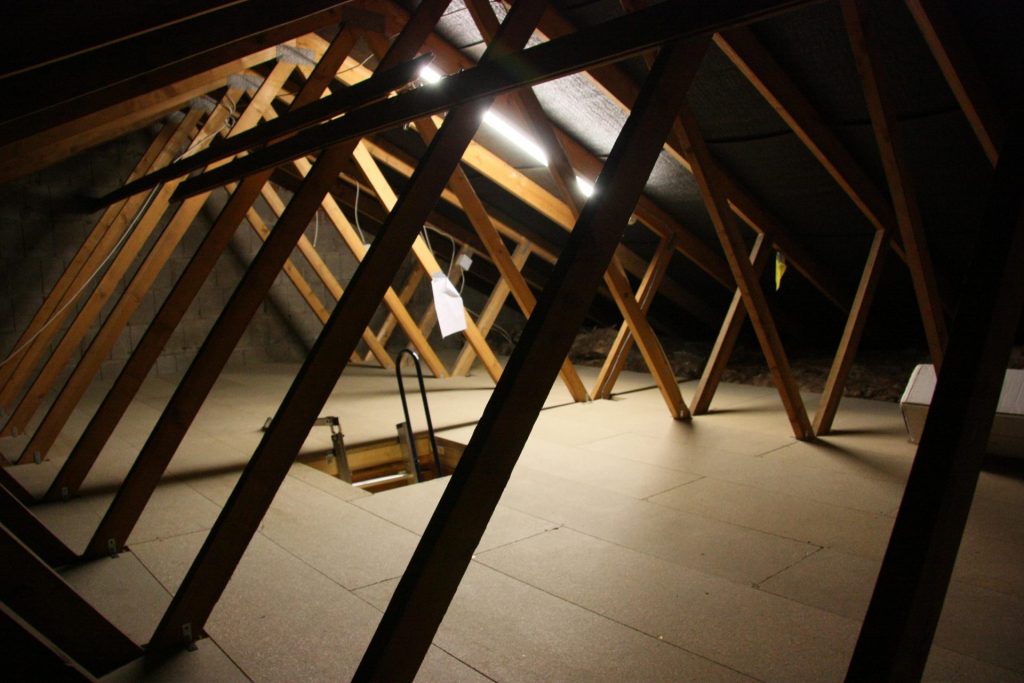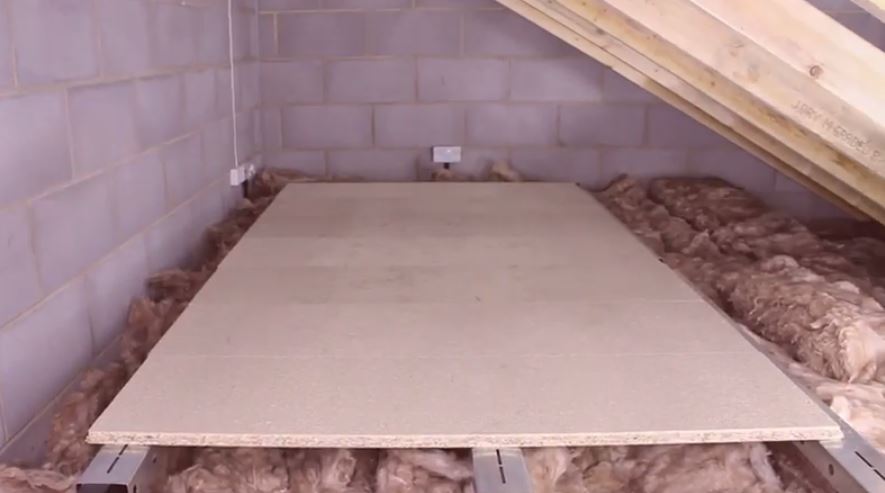An alternative to chipboard is Oriented Strand Board, which was invented in California in the 1960s. It’s similar to chipboard in that small pieces of wood are mixed with resin and compressed into shape, but instead of using particles of wood, strands are used which are all oriented into one direction with lots of layers, each laid above and at right angles to the previous one. Like chipboard, they are usually not accepted by councils for recycling.
OSB is stronger and more durable than chipboard, and some people like the look of it more, too. There are 5 grades of OSB, numbered OSB/0 to OSB/4; grades 2-4 are all load-bearing and any of these will be suitable for a loft. If you use OSB, make sure that the surface finish is smooth, sometimes OSB boards can be rough and that’s not usually acceptable if you want to walk on them. 18mm thick OSB boards weigh around 7kg/m2, almost half that of chipboard.
OSB is not usually available in the same smaller sizes as loft boards (1220 x 325mm) so you’ll need to buy bigger sheets, though some DIY stores will cut these into smaller sections if you want. They are available in tongue-and-groove, though only around the edges of these bigger sheets, not if you cut them into smaller pieces!
Guess what, OSB is more expensive than chipboard, but prices can vary a lot, so it pays to shop around. At the time of writing (April 2020), we found DIY stores selling 18mm thick tongue-and-groove OSB/3 at £12.50/m2 but builders merchants were selling them for £7.50/m2.
As it’s stronger, you could also choose to have a board that is thinner than 18mm. Because OSB strengths can vary a lot, depending on the wood and glue used, always check the strength of any boards you buy before you use them. But, for example, the leading USA DIY store chain sells OSB attic boards that are about 15mm thick. However, 15mm can sometimes be harder to source from DIY stores in the UK, so you may need to visit a builders merchant to find them. We would not recommend boards thinner than that for loft flooring.



